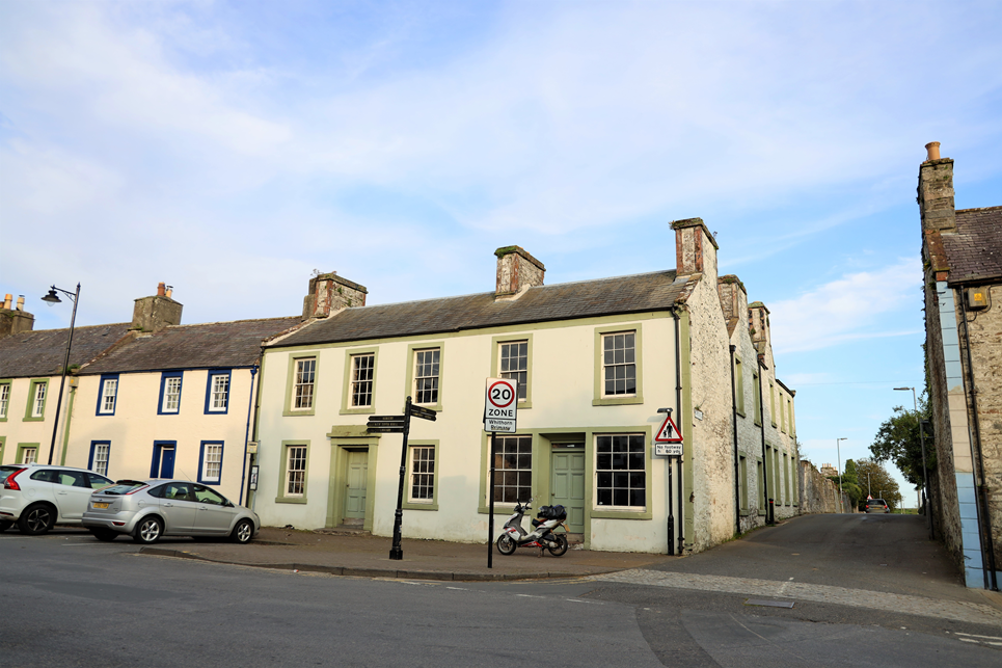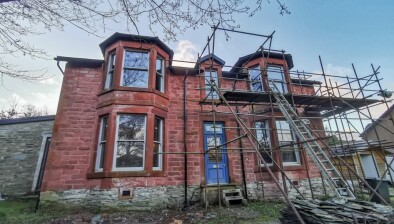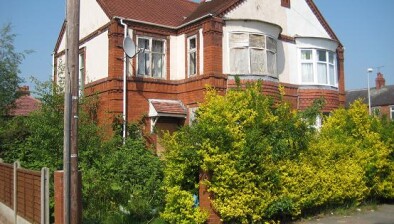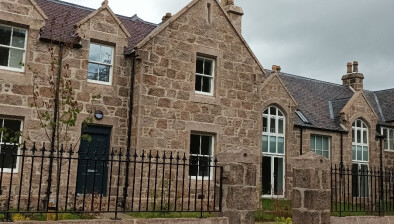Partnership brings 9,000 empty homes back into use

A former empty home in Whithorn
More than 9,000 long-term empty homes have been brought back into use in Scotland since the Scottish Empty Homes Partnership (SEHP) was established in 2010, according to a new report published today.
In its latest impact report, the SEHP reported that empty homes officers supported owners to bring 1,257 long-term empty homes back into use in 2022-23. This is the second highest annual total recorded by the SEHP, and means that, on average, 1,160 homes have been brought back into use each year since 2018.
The SEHP is funded by the Scottish Government and hosted by Shelter Scotland. It provides training, guidance and support to local empty homes officers employed by councils across Scotland who target the restoration and reuse of privately-owned empty homes for much-needed housing.
Shaheena Din, national project manager at the Scottish Empty Homes Partnership, said: “The rate of empty homes brought back into use continues to rise, and most importantly that means more homes for those who need them most.
“At a time when local authorities are reporting that the rising cost of building new homes is leading to the slowing of construction rates, it is clear that empty homes are an important part of the solution for tackling Scotland’s housing challenges.
“We know that the repair and reuse of empty homes can be more cost-effective for home-owners, councils and community organisations alike, and this is reflected in our findings which show that half of Scotland’s local authorities are now operating ‘buy-back’ schemes to purchase ex-council homes and other empty properties.”
Between 1980 and 2010, more than half of Scotland’s council homes – which had formed the majority of housing in the country - were sold following the introduction of the right-to-buy. With many of these properties now lying empty and councils facing significant housing pressures, 16 local authorities have introduced buy-back schemes to increase their social housing stock, with a particular focus on areas of housing need.
The impact report also marks the start of a new phase for SEHP where its focus will be on supporting local authorities to take a strategic approach to integrating empty homes work within a wider assessment of housing need and supply, and to promote the use of empty homes as a means to increase the supply of social and affordable housing.
- Podcast: Empty homes with Shaheena Din
Ms Din added: “The empty homes network is now entering a new, more strategic phase and we are already seeing an increasing number of empty homes schemes and projects focused on increasing the supply of social and affordable housing.
“Given the Scottish Government’s commitment to increasing housing supply by 110,000 homes by 2032, including 77,000 social homes, the buy-back of empty ex-council homes is a cost-effective and win-win approach to helping meet this target.”
The impact report includes several examples of innovative schemes and partnerships by councils, housing associations and community organisations to increase the supply of social and affordable homes.
Outcomes of Aberdeen City Council’s Matchmake-to-rent scheme have included Ukranian tenants from the Refugee Settlement Scheme being matched to the private owner of an empty property, who offered it to the tenants at Local Housing Allowance rates.
In Dumfries and Galloway, South of Scotland Community Housing (SOSCH) development trust’s community-led housing project All Roads Lead to Whithorn, saw the transformation of a 30-year empty listed premises in the town centre into two much-needed affordable, energy efficient homes which are now occupied by families.
More recently, a new strategic partnership was launched that will see SEHP, Argyll and Bute Council and Argyll and Bute Health & Social Care Partnership work together on a project that aims to bring empty homes back into use to tackle the shortage of affordable housing for health and social care workers across the region.
Housing minister Paul McLennan said: “I welcome the publication of this report. It’s encouraging to see the increase in empty homes being brought back into active use thanks to the hard work of the Scottish Empty Homes Partnership amongst others.
“Tackling empty homes is a vital part of our housing stock and will contribute to our ambitious target of delivering 110,000 affordable homes by 2032, of which at least 70% will be available for social rent.”








